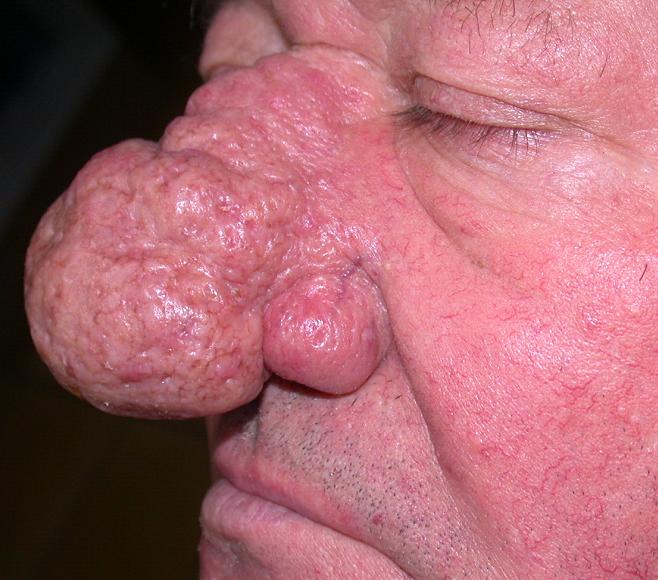Rhinophyma Symptoms, Causes, Diagnosis and Treatment

What Is Rhinophyma?
It is a skin disorder marked by bumpy, red, large nose. Rhinophyma is rare and is also known as ‘phymatous rosacea or bulbous nose. What exactly causes the skin disorder is unknown, though rhinophyma usually develops in the intense cases of rosacea.
Basically, rosacea is a chronic inflammatory condition of the skin. It is common and causes flushing or irregular redness of the face. Moreover, as the skin disorder tends to progresses, emergence of pustules (red, small, puss-filled bumps) occurs on the face.
In addition to this, Rhinophyma usually develops in the advanced stages of rosacea. It forms slowly over years. Physical effects can be distressing, and can cause social anxiety.
What Are The Alternative Names Of Rhinophyma?
Rhinophyma is also known by the following names:
- Phymatous rosacea.
- Bulbous nose.
What Are The Symptoms Of Rhinophyma?
Its symptoms involve changes in the appearance of your nose for example:
- Bulb-like shape.
- Thickening of skin.
- Reddish color.
- Yellow, waxy surface.
- Several oil glands.
When Is The Right Time To Seek Medical Assistance?
Do no delay to call up for an appointment with your doctor in case you have developed the above mentioned symptoms of rhinophyma and are already suffering from rosacea.
What Causes Rhinophyma?
Previously, it was believed that alcohol abuse was the trigger of rhinophyma. However it turned out to be wrong! It is equally observed in people who do not drink alcohol as compared to those who consume heavily. Strangely, phinophyma is far more common in males than females.
Unfortunately, what causes the skin disorder is still a mystery. Though, as mentioned earlier, it usually develops in the intense cases of rosacea.
What Are The Risk Factors Of Rhinophyma?
Several factors identified for raising the chances of rhinophyma are:
- Phinophyma is more common in males than females.
- Individuals with rosacea are more prone to contract rhinophyma in the advanced stages of rosacea.
- Middle-aged males are more likely to develop the skin disorder.
- If someone in your family has rosacea, than your chances to contract rosacea followed by rhinophyma raises.
- One is possibly at an increased risk if he or she has light eyes, hair and skin.
What Are The Potential Complications Of Rhinophyma?
As mentioned earlier, rhinophyma affects the nose, making it bumpy, red and large. This tends to affect the overall appearance of the face, leading to emotional and social distress.
How Is Rhinophyma Diagnosed?
In usual cases, no tests are needed to diagnose rhinophyma. Simply by conduction a physical exam, the health care provider can diagnose the condition. At times, doctors suggest a skin biopsy for the purpose.
How Is Rhinophyma Treated?
A common treatment of rhinophyma is the surgery option that can help reshaping the affected nose. Moreover, surgery can be conducted with dermabrasion, scalpel or a laser.
There are some acne medications that often doctors prescribe for treating rhinophyma.
What Is The Prognosis Of Rhinophyma?
Even though, surgery can help treat rhinophyma by reshaping the affected nose, however does not eradicate the chances of its recurrence.
By : Natural Health News




